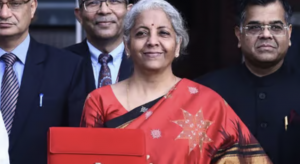NEW DELHI: Finance Minister Nirmala Sitharaman will set a record by presenting the sixth Budget in a row 5 annual Budgets and one interim a feat achieved so far only by former Prime Minister Morarji Desai. With the presentation of interim Budget on February 1, Sitharaman will surpass the records of her predecessors like Manmohan Singh, Arun Jaitley, P Chidambaram, and Yashwant Sinha, who had presented five budgets in a row. Desai, as Finance Minister, had presented five annual Budgets and one interim Budget between 1959-1964. The interim Budget 2024-25 to be presented by Sitharaman on February 1, will be a vote-on-account that will give the government authority to spend certain sums of money till a new government comes to office after the April-May general elections. As the Parliamentary elections are due, Sitharaman’s interim Budget may not contain any major policy changes. Speaking at an industry event last month, Sitharaman had ruled out any “spectacular announcement” in the interim Budget, saying it would just be a vote-on-account before the general elections. A vote-on-account, once approved by Parliament, will authorise the government to withdraw money from the Consolidated Fund of India on pro-rata basis to meet expenditure for the April-July period. The new government, which is likely to be formed around June, will come up with a final Budget for 2024-25 sometime in July. Usually, interim Budgets do not contain major policy announcements, but nothing stops the government from taking steps which are necessary to deal with the urgent issues facing the economy. After the Modi government came to power in 2014, Arun Jaitley took charge of the finance ministry and presented five Budgets in a row from 2014-15 to 2018-19. It was in 2017, that Jaitley departed from the colonial-era tradition of presenting Budget on the last working day of February to 1st of the month. Piyush Goyal, who was holding the additional charge of the ministry due to ill health of Jaitley, presented the interim Budget for 2019-20 on February 1, 2019. Goyal had hiked standard deduction for salaried taxpayers by Rs 10,000 to Rs 50,000. Also, the tax rebate for taxpayers whose annual taxable income did not exceed Rs 5 lakh was increased from Rs 2,500 to Rs 12,500. After the 2019 general elections, in the Modi 2.0 Government, Sitharaman was given the charge of the finance portfolio. She became the second woman to have presented Budget after Indira Gandhi, who had presented the Budget for financial year 1970-71. That year, Sitharaman did away with the traditional budget briefcase and instead went for a ‘bahi-khata’ with the National Emblem to carry the speech and other documents. Under Sitharaman, India has weathered the Covid pandemic with an array of policy measures announced for the poor and continued its tag of the fastest growing major economy and a ‘bright spot’ in the world economy. India is racing to become a USD 5 trillion economy by 2027-28 and a USD 30 trillion by 2047. Former Prime Minister Morarji Desai who holds the tag of presenting 10 Budgets the maximum by any finance minister had presented six of them, including one interim, in a row. The first Budget of Independent India was presented by the first finance minister R K Shanmukham Chetty. Sitharaman, who will be presenting her sixth Budget in a row, is expected to come up with some measures, especially to boost the rural sector as the agriculture sector growth in 2023-24 is estimated to decelerate to 1.8 per cent, from 4 per cent, in the preceding year. Rakesh Nangia, Chairman, Nangia Andersen India said given the proximity to the elections, the Budget is expected to focus on immediate fiscal needs rather than introducing broad long-term economic reforms. In the last interim budget for FY 2019-20, while the overall tax structure remained unchanged, there were certain specific tax rebate and standard deduction concessions. “While major announcements may be deferred until after the 2024 Lok Sabha Elections, the Budget is expected to address ongoing concerns and lay the foundation for future economic growth. This strategic approach aims to balance immediate fiscal responsibilities with long-term economic objectives in a pre-election context,” Nangia said.

